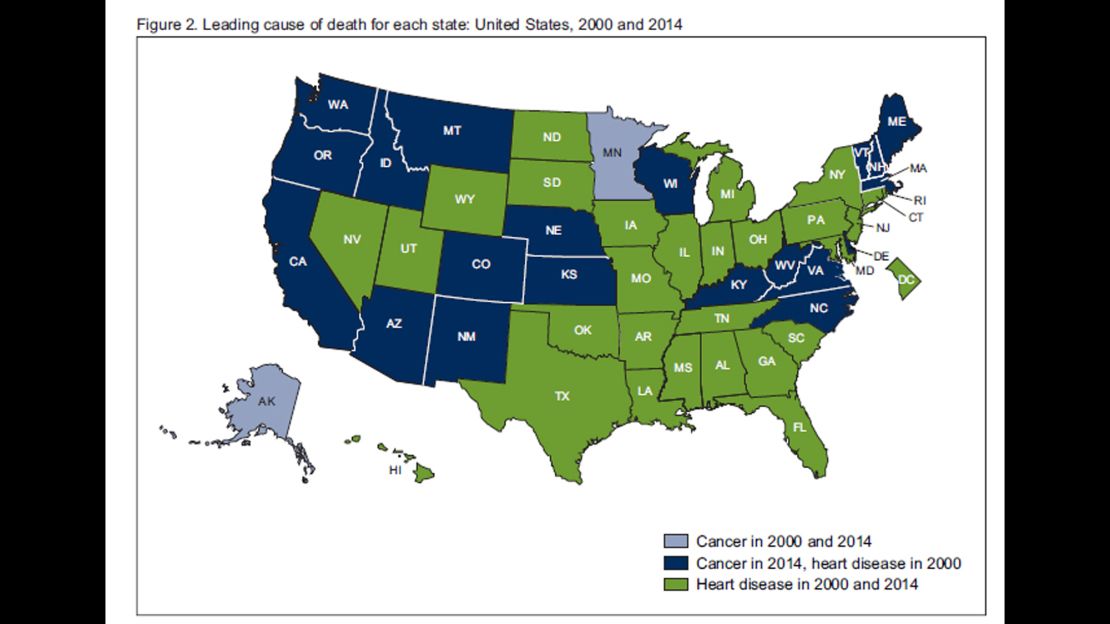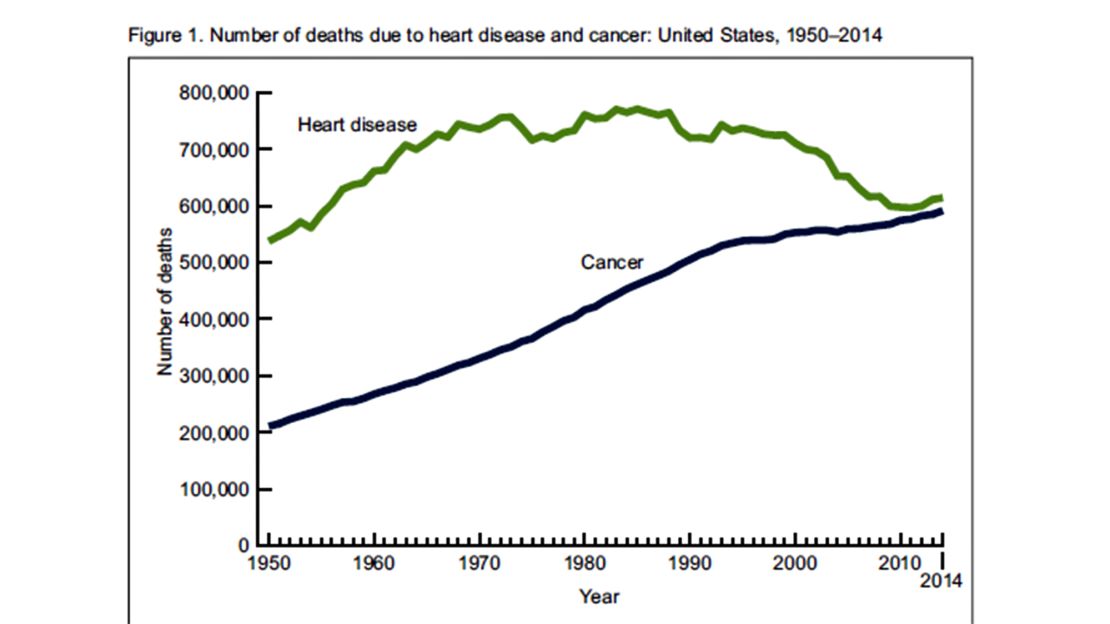Story highlights
In 22 states, more people died from cancer than from heart disease during 2014
Cancer is the leading cause of death for Asians, Pacific Islanders and Hispanics
Heart disease kills more whites and blacks
More Americans die from heart disease, but cancer is rapidly gaining ground as the No. 1 killer.
In 22 states, more people died from cancer during 2014 than from heart disease, new data from the National Vital Statistics System indicated. This is a substantial uptick from 2002, when only two states (Alaska and Minnesota) recorded more cancer deaths than heart disease deaths.
This might be due to obesity, which is a risk factor for both heart disease and cancer, explained Dr. Paolo Boffetta, a professor of environmental medicine and public health at Icahn School of Medicine at Mount Sinai, who was not involved in the study. Obesity is more likely to cause heart deaths than cancer deaths.

Cancer deaths gaining on deaths related to heart disease might be explained by the fact that “treatment for cancer is more complex, and we are not able to treat cancer as effectively as cardiovascular disease yet,” Boffetta said.
Essentially, it’s like two trucks traveling down the street, except one is running slightly faster than the other, Boffetta said. Similar trends are occurring in Northern Europe, he said, where cardiovascular disease deaths have gone down while cancer deaths also declined but much slower.
Who dies from cancer, heart disease
Among two groups of Americans, cancer already leads to more deaths than heart disease. For Asians or Pacific Islanders, cancer first became the leading cause of death in 2000. Within this population, the number of cancer deaths increased by 79.6% between 2000 and 2014, while heart disease deaths increased by just 45.5%.

Cancer replaced heart disease as the leading cause of death for Hispanics in 2009. Within this group, the number of cancer deaths increased by 72.2% from 2000 to 2014,compared with a 31.8% increase in the number of heart disease deaths.
“Asian-Americans and Hispanics traditionally have lower cardiovascular mortality,” Boffetta said.
By contrast, white and black Americans have not seen the same shift: Heart disease remains the most likely cause of death for those groups.
The results are unsurprising, said Dr. Deepa Halaharvi, a breast cancer surgeon with OhioHealth Breast and Cancer Surgeons. “Heart disease is the most common cause of death in women,” said Halaharvi, who did not contribute to the study.
Historical trends
“Heart disease has been the leading cause of death since 1910 except for one year, 1918,” said Bob Anderson, co-author of the study from the Mortality Statistics Branch Division of Vital Statistics at the National Center for Health Statistics. In 1918, Spanish flu took the nation, and world, by storm.
Infectious diseases, including the flu, were the likely major causes of death prior to 1910, when an “epidemiological transition” occurred, moving away from infectious diseases and toward chronic diseases, Anderson explained. “That really picks up in 1950, when you have widespread access to antibiotics,” he said.
This study of the leading causes of death is compiled annually since 1900. The researchers examine deaths by state recording data on race, ethnicity and cause of death. To create the current report, Anderson and his co-author collected data from death certificates.
According to Halaharvi, this is a limitation of the study; death certificates are written before an autopsy, when the most accurate information is gathered.
“You’re writing a death certificate before all the information is out,” she said, adding that an autopsy is not requested for everyone. Someone with cancer may suffer from other medical problems, including heart disease, and might die from one or another, but it’s difficult to make the distinction without an autopsy or further tests. Did the heart stop because of cancer progress or because of heart disease?
It’s difficult to know, and so the death certificate is “more or less a guess,” said Halaharvi.
Follow CNN Health on Facebook and Twitter
Death certificates are not ideal, Boffetta said, and sometimes deaths may be reported inappropriately. “They may not be correct in absolute terms, but the error would be similar across the years,” he said. “The big trends are real for sure.”












